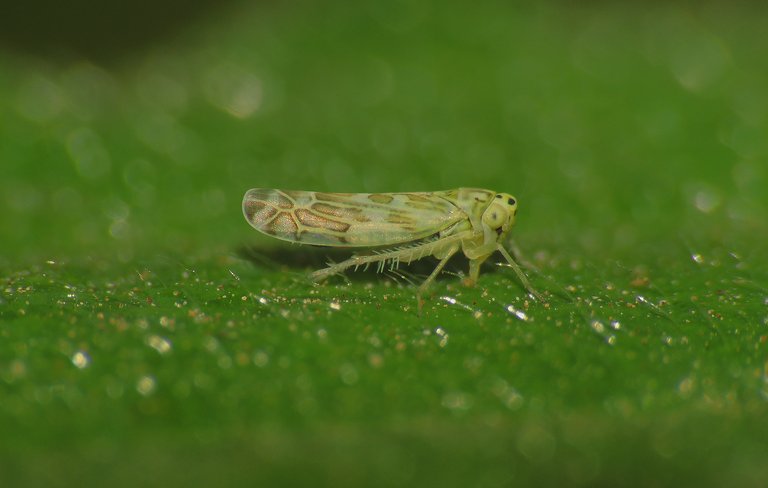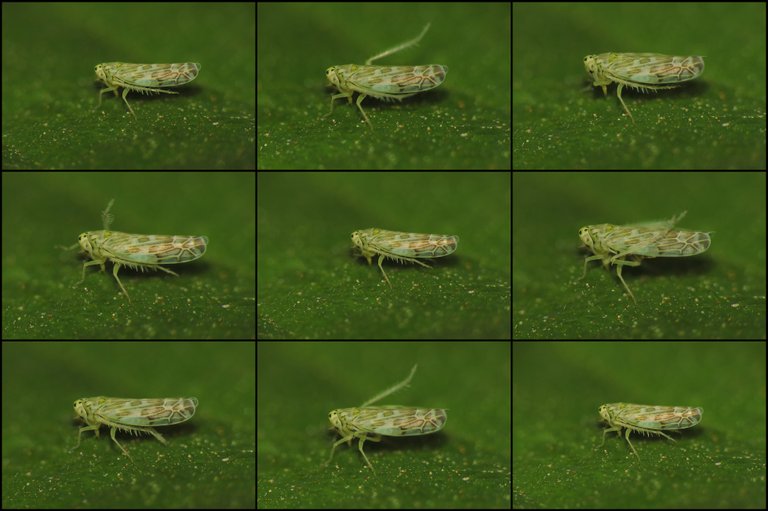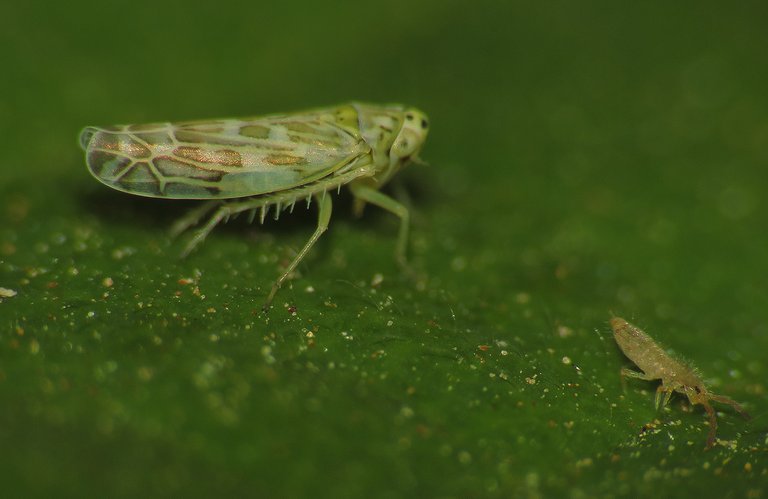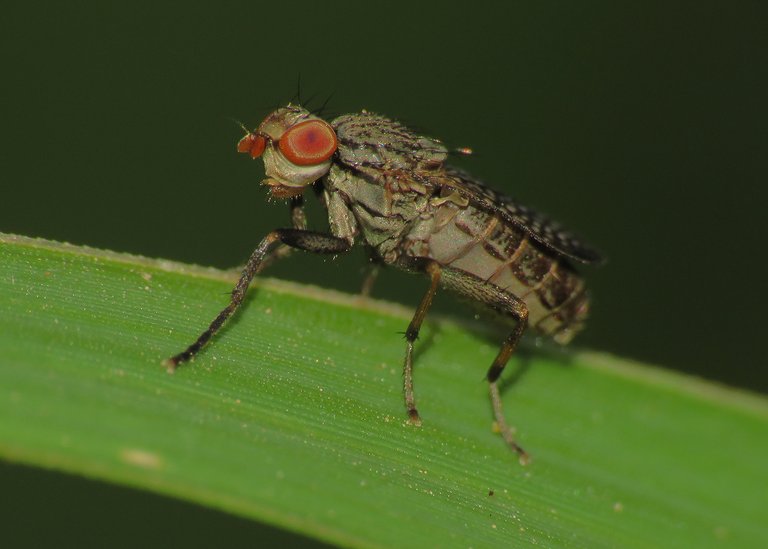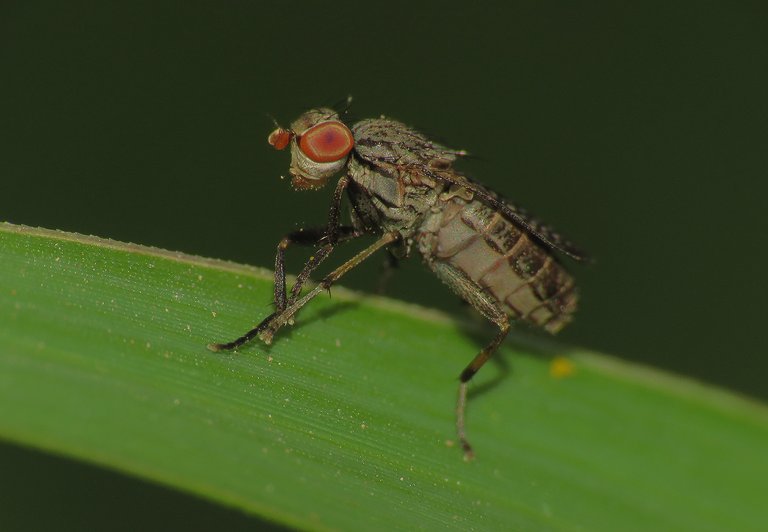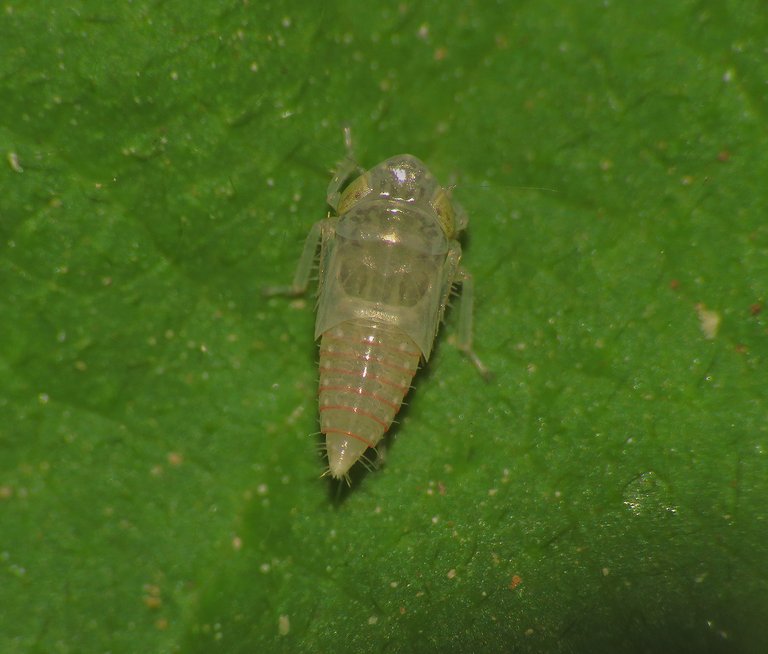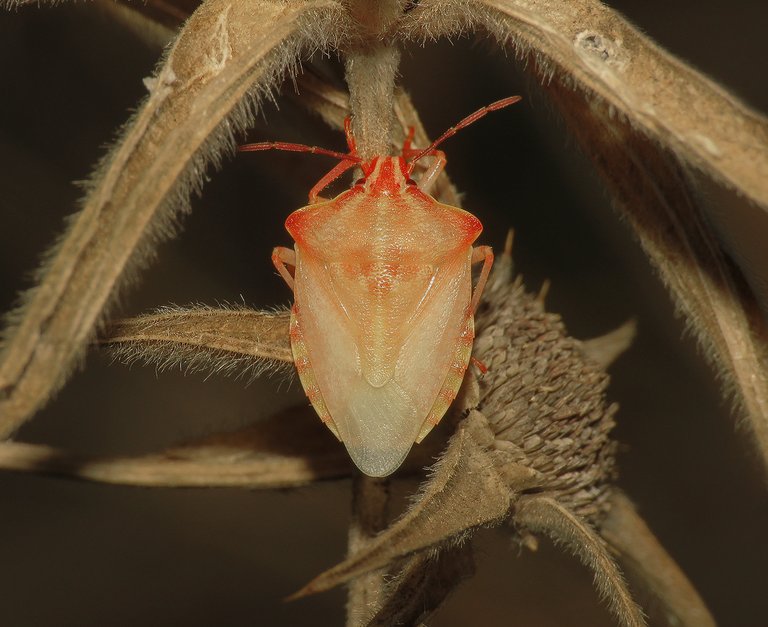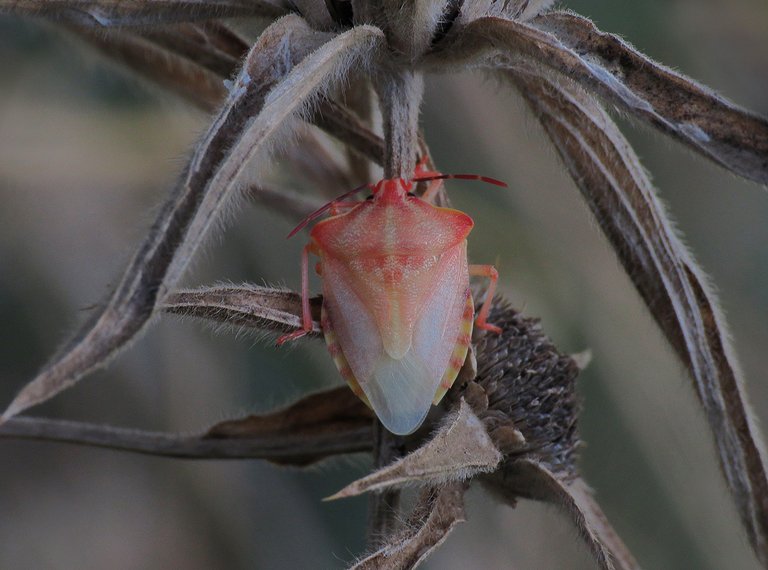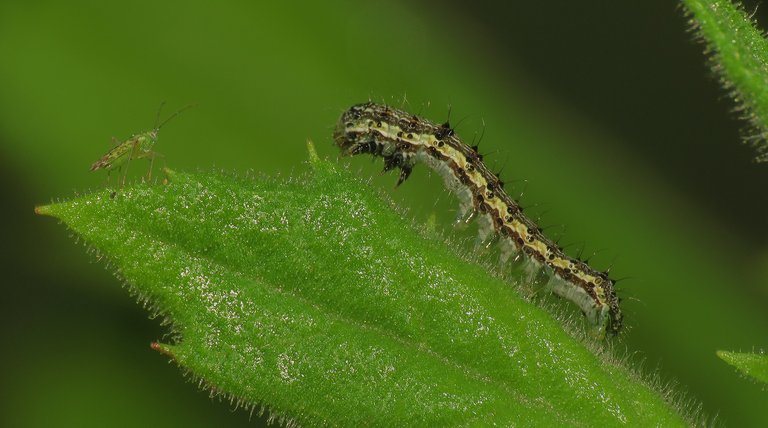When it comes to the local flora & fauna, this October ended up being more inspiring than I could have ever expected. The summer temperatures during the day with a bit of autumnal humidity early in the morning created the conditions for many plants to bloom and many small arthropods to be active and thrive. Inspired by nature, I feel the urge to visit Marlera, the coastal area a couple of kilometers from the village of Liznjan, and about five or six kilometers from where I live, almost every day.
In today's post, I'm gonna show you what I found on the seventh of October, late in the afternoon.
Observing this moth was definitively the highlight of the whole experience.
Its translucent wings look great in the subdued ambient light of that undefined time of the day situated somewhere between the fading afternoon and the upcoming evening. The name of the species is Palpita vitrealis, the name of the family is Crambidae, and this was the last insect I photographed that day.
This leafhopper was the first. Eupteryx melissae is the name of this species from the Cicadellidae family. In this photograph, the leafhopper is sucking the nutrients from some herbaceous plant. Its proboscis stuck into the juicy tissue of the leaf is clearly visible. In the following set of nine, more or less consecutive shots ...
... you can see the same insect using its legs to clean its head, eyes, and wings. The process looks like some kind of dancing ritual, a yoga exercise, or something similar. Whatever it is, it looks very uplifting and inspiring - I almost started doing the same.
At one point, while I was photographing the leafhopper, a tiny springtail from the Entomobryidae family entered the scene. You can see it in the lower right corner of this photograph.
Here you can take a break from the macro view by taking a look at the young plant that has the potential to become a tree one day. A Celtis australis tree, more specifically.
Here you can see an interesting fly that was resting on a blade of grass. In the following photograph ...
... I came closer to take a better look through the macro lens.
I don't remember seeing a fly like this before.
By its appearance, is immediately clear that it belongs to the Sciomyzidae family. But only today, while preparing this post, I learned that the name of the species is Pherbellia limbata.
I learned also that can be found throughout southern and central parts of Europe, but it can't be found easily. It's a rare species. Flies from the Sciomyzidae family are commonly known as marsh flies. As the common name suggests, most Sciomyzidae species like very humid habitats. Pherbellia limbata is one of the few species that live in hot and dry habitats, among the vegetation that grows on calcareous soil.
The larvae of this fly attack and eat various small land snails and then pupate in their empty shells.

Here you can see another leafhopper.
It's a wingless nymph, not a completely developed adult insect.
With quite a few similar-looking leafhoppers present in the area, a nymph like this is very hard to identify. I can't tell you what species is this. The family is Cicadellidae.
Identifying adult leafhoppers can often be an equally difficult task. Judging by its appearance, the one shown in this triptych could be the Euscelis distinguendus. Or the Hardya tenuis. Or the Pinumius areatus. Or something else from the Cicadellidae family.
A look at this photograph can provide another beneficial break from the macro view. The protagonist of the shot is the Foeniculum vulgare, a plant commonly known as the wild fennel.
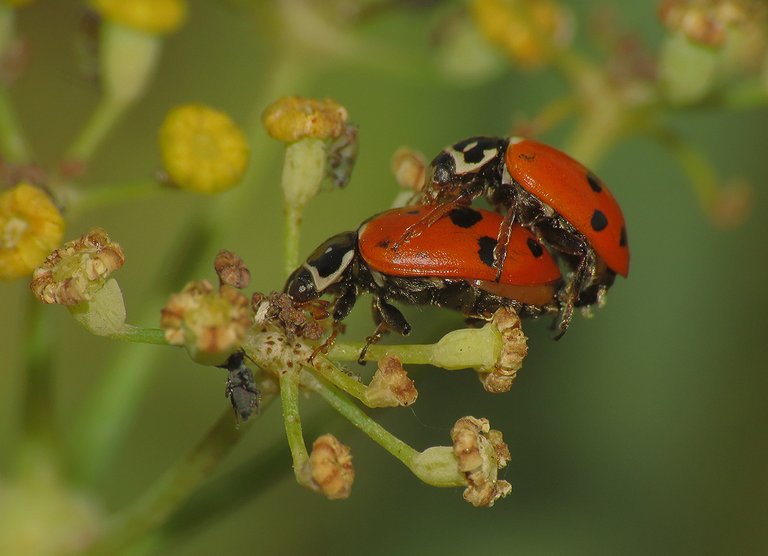
Here you can see a pair of Hippodamia variegata ladybeetles mating among the tiny wild fennel flowers that are losing their petals. Those flowers will become fruits pretty soon.
On one of some completely dry plants, twenty or thirty meters from the fennel, I found this shield bug that recently came out of its old exoskeleton. The insect shown in this and the following two photographs, started the day as a wingless nymph and now, in the evening, has become a winged adult,
Here you can take a look at the same scene photographed in ambient light.

The name of this bug from the Pentatomidae family is Carpocoris purpureipennis, but since the insect is still soft and pale after the recent molting, it doesn't look like a typical Carpocoris purpureipennis shield bug.
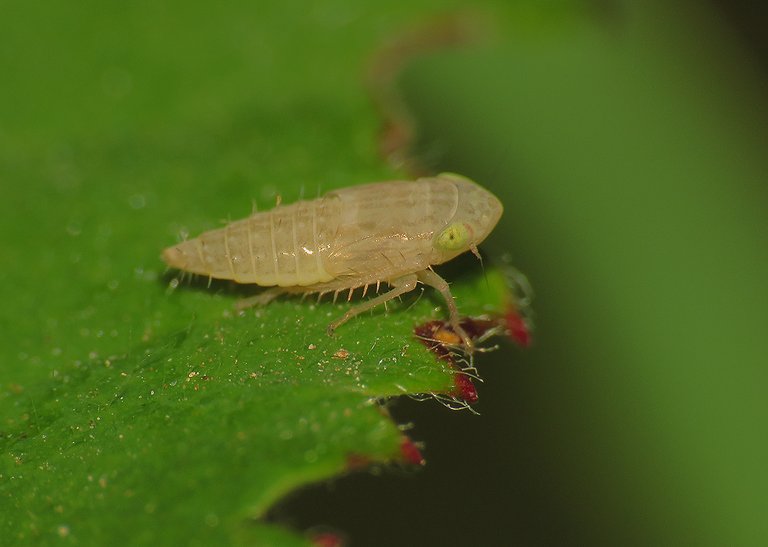
Here you can see another leafhopper nymph I wasn't able to identify.

This is a moth larva.
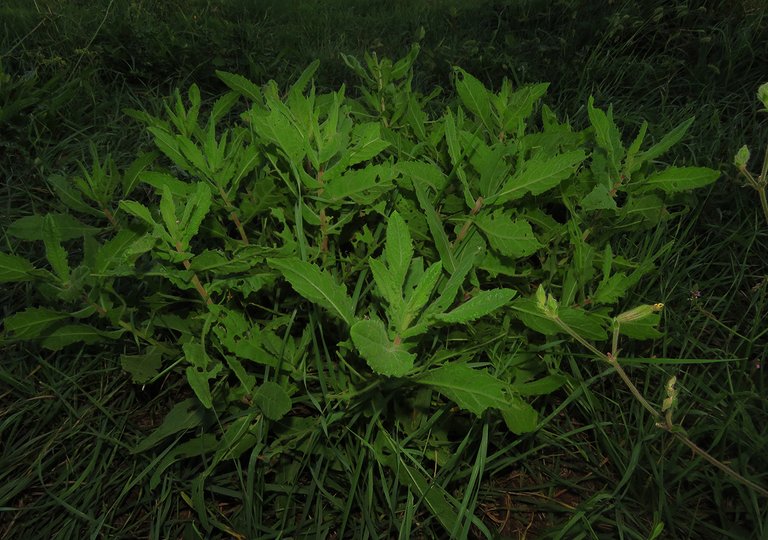
I found it on the leaves of the Dittrichia viscosa plant.

In this photograph, I came closer to the caterpillar, so you can take a better look at the details of its external anatomy.
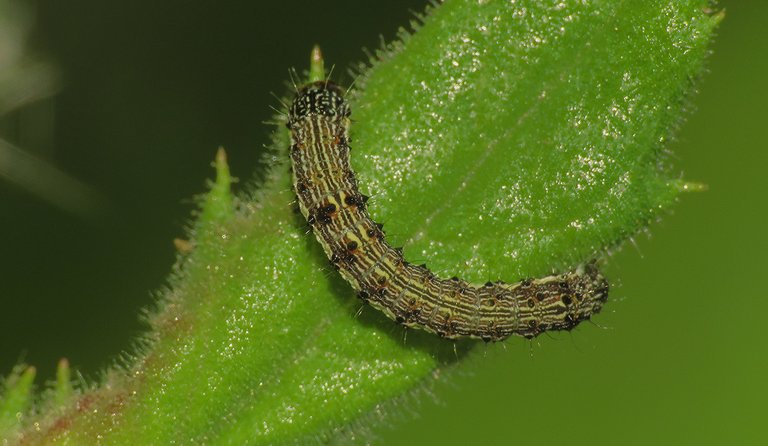
The name of the species is Helicoverpa armigera.
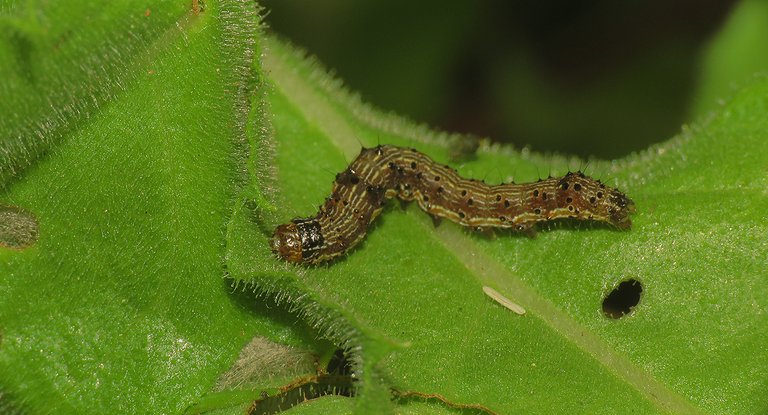
Helicoverpa armigera is a moth from the Noctuidae family. I encounter the larvae of this species very often, the adults - not so much.
These caterpillars feed on a wide variety of wild and cultivated plants.
In this shot, especially if you enlarge the picture by clicking on it, you can see the Helicoverpa armigera caterpillar next to the Macrotylus paykulli, a small bug from the Miridae family.

You can always find a thing or two that is worth observing and photographing on the Dittrichia viscosa plants.
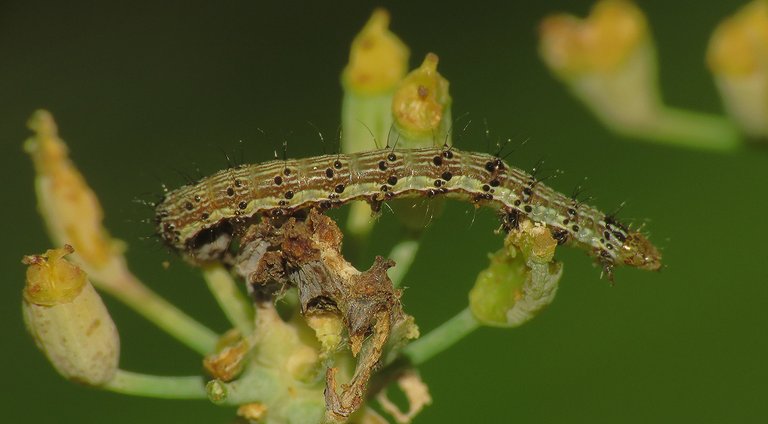
Later I came across a Helicoverpa armigera caterpillar that was feeding on fennel.
Just like Helicoverpa armigera, the moth shown in this photograph also belongs to the Noctuidae family. The name of the species is Autographa gamma. On the grass, a meter or two from the moth ...
... I found and photographed this Pisaura mirabilis spider. At this point, the night wasn't very far.
I was ready to leave Marlera when I noticed the beautiful moth that started this post.
I photographed two Palpita vitrealis moths before leaving. In these two photographs, one of which was taken with the flash of my camera and the other in the low ambient light, you can see the first one.
A couple of meters further, the second Palpita vitrealis has spread its beautiful wings allowing me to take a few attractive shots.
AND THAT'S IT. HOPE YOU ENJOYED THIS MACRO EXPERIENCE. AS ALWAYS HERE ON HIVE, THE PHOTOGRAPHS ARE MY WORK.
The following links will take you to the sites with more information about some of the protagonists of this post. I found some stuff about them there.
https://en.wikipedia.org/wiki/Palpita_vitrealis
https://en.wikipedia.org/wiki/Eupteryx_melissae
https://en.wikipedia.org/wiki/Entomobryidae
https://en.wikipedia.org/wiki/Celtis_australis
https://www.biotaxa.org/Zootaxa/article/view/zootaxa.4117.1.2
https://www.truehopperswp.com/families/cicadellidae
https://en.wikipedia.org/wiki/Hippodamia_variegata
https://en.wikipedia.org/wiki/Helicoverpa_armigera
https://en.wikipedia.org/wiki/Silver_Y



